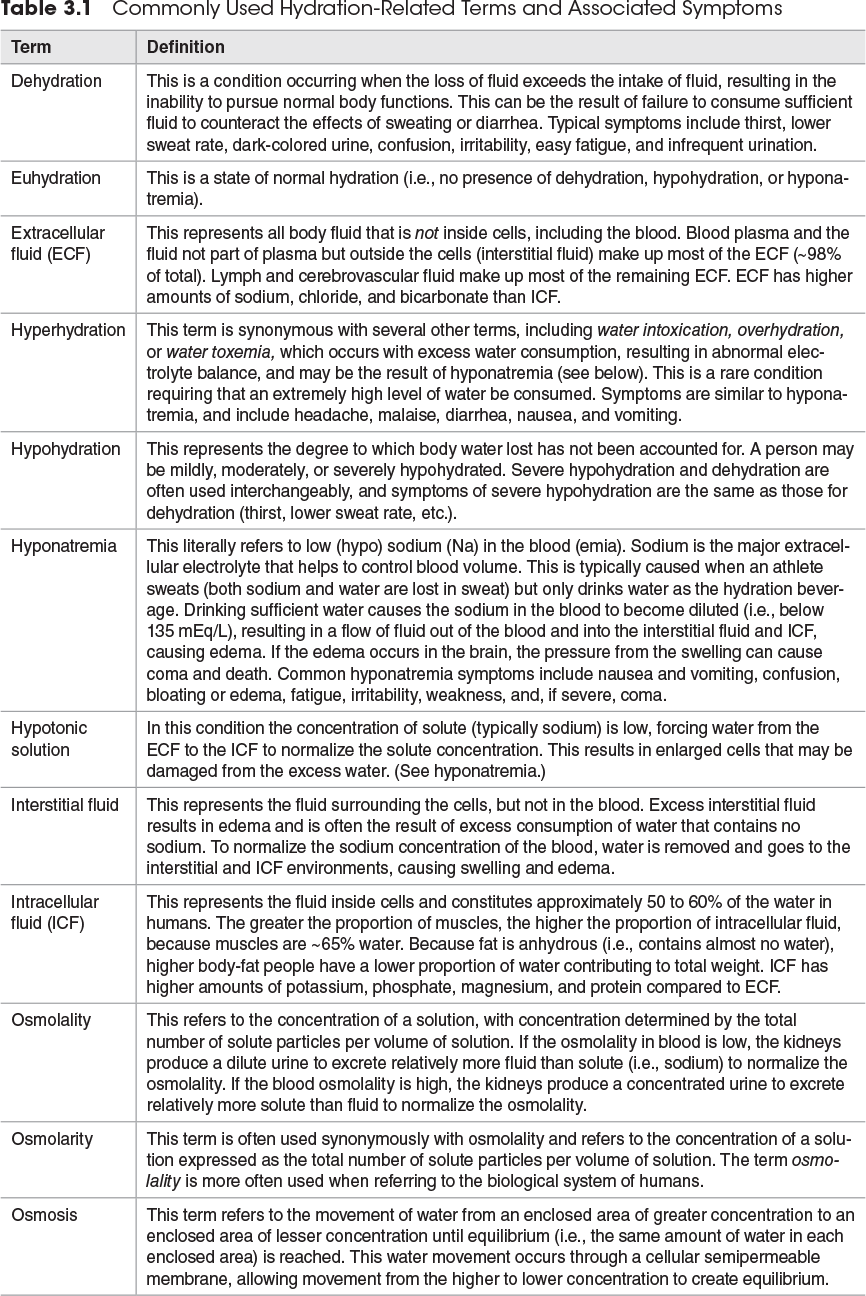Sustain high-level performance with fluids and electrolytes
This is an excerpt from Advanced Sports Nutrition-3rd Edition by Dan Benardot.
Perhaps the most important factor associated with sustaining a high level of athletic performance is the maintenance of fluid and blood sugar balance during exercise. Unfortunately, it has been found that, even in the presence of available fluids, many athletes experience a degree of voluntary dehydration, with a concomitant drop in blood sugar, during training and competition that has an inevitable negative impact on performance. (See table 3.1 for definitions of dehydration and related terms.) Because exercise is a heat-generating activity, separate from heat exposure from the environment, a large amount of heat must be dissipated during exercise through sweat evaporation. Athletes must sustain a good hydration state to continue exercise performance. A failure to do so will result in premature fatigue and may also lead to potentially life-threatening heatstroke.

SHOP

Get the latest insights with regular newsletters, plus periodic product information and special insider offers.
JOIN NOW


